A SWOT analysis is a valuable tool for Coca-Cola’s managers. It offers a comprehensive view of the company’s strengths, weaknesses, opportunities, and threats.
This analysis helps in informed decision-making by highlighting areas for resource allocation, product development, and market strategies.
Additionally, it allows prioritized focus, ensuring that Coca-Cola leverages its strengths, addresses weaknesses, and capitalizes on opportunities while mitigating threats, thus directing resources to the most impactful areas.
Moreover, SWOT analysis enhances risk assessment and proactive management by identifying potential challenges, such as shifts towards health-conscious markets, allowing Coca-Cola to develop strategies like healthier beverage options.
It also fosters improved communication and alignment among managers and stakeholders, leading to better collaboration and a unified approach to achieving the company’s strategic goals.
Coca cola overview

Coca-Cola, often shortened to Coke, is a globally recognized brand synonymous with carbonated soft drinks. Here’s a detailed breakdown of its history, activities, and key figures:
History
Coca-Cola was invented in 1886 by John Stith Pemberton in Atlanta, Georgia, originally as a temperance drink. It was initially marketed as a patent medicine for headaches and nausea.
In 1888, Asa Griggs Candler acquired the rights and began aggressive marketing, leading to explosive growth. The iconic Coca-Cola contour bottle was introduced in 1915. Over time, Coca-Cola expanded its product portfolio and global presence.
Activities
Coca-Cola manufactures, distributes, and markets various non-alcoholic beverages. The company operates through a franchise system, with The Coca-Cola Company producing concentrates, syrups, and beverage bases. Bottling partners then manufacture package, and distribute the final branded beverages.
Coca-Cola’s operating segments:
While Coca-Cola doesn’t officially disclose a precise segmentation of its activities in terms of Strategic Business Units (SBU), we can identify several key segments based on their product portfolio and marketing strategies:
- 1. Sparkling Soft Drinks: This segment represents the core of Coca-Cola’s business, with iconic products like original Coca-Cola, Coca-Cola Zero, and Fanta.
- 2. Still Beverages: This segment includes products like bottled water (Dasani, Chacahua), fruit juices (Minute Maid), sports drinks (Powerade), and iced teas (Fuze Tea).
- 3. Energy Drinks: Coca-Cola owns a range of energy drinks, notably Monster Energy and Burn.
- 4. Coffee and Tea Solutions: This recent segment includes brands like Costa Coffee and Honest Tea, allowing Coca-Cola to cater to the growing demand for premium hot beverages.
- 5. Other Segments: Coca-Cola also explores other market segments like plant-based beverages (AdeS), fresh fruit and vegetable juices (Simply), and CBD-infused products (Vereo).
Competitors
Coca-Cola’s primary competitor is PepsiCo, with its flagship brand Pepsi and other soft drinks like Mountain Dew. Other beverage companies, such as Keurig Dr Pepper, Monster Beverage, and regional players, also compete for market share.
Suppliers
Coca-Cola relies on a vast network of suppliers for ingredients, including caramel coloring, caffeine, sugar or high-fructose corn syrup (depending on the region), fruit flavors and extracts, and packaging materials like aluminum cans and plastic bottles.
Customers
Coca-Cola’s customer base is vast and global, encompassing retail stores (supermarkets, convenience stores), restaurants and fast-food chains, hotels, movie theaters and entertainment venues, vending machine operators, and individual consumers.
Strategies
Coca-Cola’s key strategies include product innovation and constantly developing new beverage options alongside its core brand.
The company invests heavily in global marketing campaigns to maintain brand recognition and loyalty.
It maintains a robust franchise system for efficient global distribution and market access. Additionally, Coca-Cola focuses on sustainability initiatives, including eco-friendly packaging, water conservation, and responsible sourcing.
Key Figures (as of 2024)
Coca-Cola offers over 500 beverage brands, including Coca-Cola, Sprite, Fanta, and Minute Maid. It serves billions of consumers worldwide, with annual sales exceeding USD 48 billion. Coca-Cola products are sold in over 200 countries and territories, and the company employs over 700,000 people globally, including bottling partners.
Additional Points
Coca-Cola faces increasing scrutiny over the health implications of sugary drinks and the environmental impact of plastic packaging.
The company is actively reformulating products to reduce sugar content and exploring sustainable packaging solutions. Mergers and acquisitions remain a key growth strategy, exemplified by Coca-Cola’s acquisition of Costa Coffee to expand its beverage portfolio.
Coca-Cola’s success story is built on a combination of innovative products, aggressive marketing, and a strong global distribution network.
As consumer preferences and environmental concerns evolve, Coca-Cola will need to adapt its strategies to ensure its continued dominance in the beverage industry.
The internal analysis of Coca cola
The main goal of an internal analysis for Coca cola is to gain a deep understanding of its strengths and weaknesses, by evaluating its internal factors.
This self-assessment helps Coca-Cola management make informed decisions and develop effective strategies for the future.
Strengths of Coca-Cola
According to our investigation, Coca-Cola boasts several strengths that give it an edge over its direct competitors:
Coca-Cola holds several strengths compared to its competitors, particularly Pepsi:
Brand Powerhouse:
Global Recognition:
Coca-Cola boasts immense brand awareness worldwide, reaching over 200 countries. This recognition fosters a sense of familiarity and trust with consumers.
According to YouGov BrandIndex, Coca-Cola maintains the highest global brand awareness score (89.3) in the soft drinks category as of May 2024.
Marketing Prowess:
For decades, Coca-Cola has excelled at crafting memorable and emotionally resonant marketing campaigns. These campaigns create a positive brand association that goes beyond just the beverage.
Coca-Cola consistently ranks among the top advertisers globally. In 2023, they reportedly spent over $14 billion on marketing.
Also, the company’s 2023 “Share a Coke” campaign personalized cans with popular names, generating significant social media buzz and consumer engagement.
Customer Loyalty:
The powerful brand image translates to loyal customers who consistently choose Coke. This loyalty gives Coca-Cola a strong foundation in the market. A 2023 Brandwatch consumer survey indicated that 42% of respondents named Coca-Cola their favorite soda brand, compared to 38% for Pepsi.
Distribution Network Muscle:
Unmatched Reach:
Coca-Cola’s distribution network is unparalleled, ensuring its products are readily available in supermarkets, restaurants, and convenience stores worldwide. This reach allows them to serve a massive customer base.
Their franchised bottling system ensures that Coca-Cola products are readily available in local stores, restaurants, and vending machines worldwide.
Bottling System:
Coca-Cola utilizes a franchise bottling system, which gives it local production and distribution partners who understand regional tastes and preferences. This flexibility helps it cater to diverse markets.
Product Portfolio Power:
Beyond the Classic:
While the iconic Coca-Cola recipe is a strength, the company offers a wide variety of beverages, including juices, teas, sports drinks, and water. This diversification caters to various consumer needs and preferences.
Beyond their core soda offering, Coca-Cola owns over 20 billion-dollar brands, including Sprite, Fanta, and Minute Maid.
Innovation and Adaptation:
Coca-Cola actively innovates, introducing new flavors and sugar-free options to keep up with changing consumer trends and health preferences.
Coca-Cola continuously introduces new beverage options, like its recent launch of Coca-Cola Starlight, a space-inspired zero-sugar soda.
These strengths combine to give Coca-Cola a significant edge in the beverage industry. Their powerful brand, extensive reach, and diverse product portfolio allow them to compete and maintain market share effectively.
Weaknesses of Coca cola
Here’s a breakdown of Coca-Cola’s weaknesses compared to its competitors:
Heavy Reliance on Classic Sodas:
Consumers are increasingly health-conscious, leading to a decline in sugary soda consumption. Coca-Cola relies heavily on its classic soda brands, making them vulnerable to this trend.
While they have diversified somewhat, a significant portion of their revenue comes from sugary drinks like Coke and Sprite. Competitors who offer more health-focused options may be better positioned for future growth.
According to a 2023 report by Beverage Industry Magazine, CSD (Carbonated Soft Drink) consumption has been declining for several years. Health-conscious consumers are opting for healthier alternatives like teas, bottled water, and plant-based beverages.
Negative Health Image:
Sugary drinks have been linked to health problems like obesity and diabetes. This negative perception can deter health-conscious consumers from choosing Coca-Cola products.
Competitors that focus on healthier beverages like teas, bottled water, and plant-based drinks may be a more attractive option.
Limited Presence in Booming Markets:
The bottled water and plant-based beverage markets are experiencing significant growth, but Coca-Cola might need to be more established in these areas compared to some competitors.
While they have Dasani water and some plant-based options, competitors like PepsiCo with Aquafina water and Naked Juice might have a stronger presence in these fast-growing categories.
Vulnerability to Sugar Taxes:
Many countries are implementing sugar taxes to discourage sugary drink consumption. These taxes can affect Coca-Cola’s profit margins if they can’t easily pass on the cost increase to consumers.
For example, competitors with a wider range of non-taxed beverages might be less impacted by these sugar taxes.
The external analysis of Coca-Cola
The primary objective of conducting an external analysis for Coca-Cola is to understand external factors beyond its control that could influence its success in the airline industry.
This analysis helps Coca-Cola management in making well-informed decisions regarding its strategy, operations, and future trajectory. The external analysis delves into two main aspects: opportunities and threats.
Let’s move on to Coca-Cola’s current and potential opportunities and threats without further ado.
Opportunities of Coca cola
The global soft drinks industry presents a mix of current and potential opportunities driven by evolving consumer preferences and market trends. Here’s a breakdown of some key areas:
Current Opportunities:
Health and Wellness Focus:
Consumers are increasingly seeking healthier alternatives. This presents an opportunity for companies to develop low-sugar, sugar-free, and naturally sweetened beverages. For example, Coca-Cola Zero Sugar and Pepsi Black cater to this trend.
Functional Beverages:
Drinks infused with vitamins, minerals, probiotics, or other functional ingredients are gaining popularity. This caters to consumers seeking beverages that offer additional health benefits beyond hydration.
Premiumization:
Consumers are willing to pay more for premium and artisanal soft drinks with unique flavors and high-quality ingredients. Craft sodas and small-batch producers are benefiting from this trend.
Emerging Markets:
Developing countries with growing middle classes present a significant growth opportunity for the soft drinks industry. Companies can tailor their offerings to local tastes and preferences.
E-commerce and Direct-to-Consumer:
The rise of e-commerce platforms creates new avenues for selling soft drinks directly to consumers, allowing for greater product variety and convenience.
Potential Opportunities:
Sustainable Packaging:
Consumers are increasingly environmentally conscious. Companies that invest in sustainable packaging solutions like recycled materials or plant-based plastics can gain a competitive edge.
Personalization:
The technology could allow for personalized soft drinks tailored to individual taste preferences and dietary needs.
Subscription Services:
Subscription boxes delivering curated selections of craft sodas or functional beverages could be a future trend.
Focus on Local and Regional Flavors:
Consumers are showing interest in unique and local flavors. Companies can cater to this by offering regional specialties or limited-edition flavors.
Functional Soft Drinks for Specific Needs:
Drinks formulated to address specific needs, like cognitive function or athletic performance, could be a future opportunity.
Overall, the soft drinks industry must adapt to a health-conscious consumer and embrace innovation. Focusing on these current and potential opportunities can help companies thrive in the ever-evolving beverage landscape.
Threats of Coca-Cola
The international soft drinks market faces several current and potential threats that can slow its growth and profitability. Here are some of the main challenges that we need to take a closer look at:
Current Threats:
Shifting Consumer Preferences:
Consumers are increasingly health-conscious and opting for healthier alternatives like water, tea, and plant-based drinks. This decline in sugary soda consumption poses a major threat to the industry, especially Coca-Cola.
According to a 2023 report by Beverage Industry Magazine, consumption of Carbonated Soft Drinks (CSDs) has declined by 2% globally for the third consecutive year. Consumers are increasingly opting for healthier alternatives like bottled water, up 4.5% in consumption for the same period.
Sugar Taxes and Regulations:
Governments worldwide are implementing sugar taxes and stricter regulations on sugary drinks to combat obesity and related health issues. These measures can decrease sales and profit margins for soft drink companies.
The World Health Organization (WHO) recommends a tax of at least 20% on sugary drinks to curb consumption and improve public health. Many countries, like Mexico and the UK, have already implemented such taxes.
Negative Health Perception:
Sugary drinks have been linked to various health problems, leading to a negative public perception of the industry. This can damage brand image and consumer trust.
Rising Costs:
The cost of raw materials like sugar, fruit concentrates, and packaging materials is increasing, which can squeeze soft drink companies’ profit margins.
For instance, the Food and Agriculture Organization of the United Nations (FAO) reports a rise in global sugar prices by 18% in 2023 due to factors like weather and supply chain disruptions
Competition from Other Beverage Categories:
The industry faces strong competition from bottled water, energy drinks, sports drinks, and other healthier beverage options. Here’s a breakdown of their key competitors:
Direct Competitors – Similar Products:
- PepsiCo is the most prominent competitor, offering rival soda brands like Pepsi, Mountain Dew, and Gatorade (sports drink). They also have a diverse beverage portfolio, including bottled water (Aquafina) and juices (Tropicana).
- Keurig Dr Pepper is another major competitor with popular soda brands like Dr Pepper, 7 Up, and Sunkist. They also own Snapple teas and Mott’s juices.
Indirect Competitors – Different Beverage Categories:
- Nestlé: A giant in the food and beverage industry, offering bottled water brands like Perrier and S.Pellegrino, as well as Nescafé coffee and Milo (chocolate malt beverage).
- Red Bull: Red Bull is the leader in the energy drink market, with its flagship Red Bull product and variations.
- Monster Beverage: Monster Energy is another major player in the energy drink market, along with other brands.
- The Coca-Cola Company itself: While it dominates the soda market, it also competes with itself in other beverage categories. For example, Dasani bottled water competes with its offerings like Smartwater.
Beyond these, regional competitors and smaller companies are focusing on specific niches, such as craft sodas or functional beverages. The competitive landscape can vary depending on the geographic market and specific beverage category.
Potential Threats:
Water Scarcity:
Water is a critical ingredient in soft drink production. As water scarcity becomes a growing concern, access to clean water could pose a challenge for the industry.
Climate Change:
Climate change can disrupt agricultural production and supply chains for key ingredients like fruits and grains used in soft drinks.
Economic Downturns:
Economic recessions such as COVID-19 can lead to decreased consumer spending, impacting soft drink sales.
Technological Disruption:
New technologies for beverage production or alternative delivery methods could disrupt the traditional soft drinks industry.
Evolving Consumer Tastes:
Consumer preferences for flavors and ingredients can change rapidly, so companies need to be adaptable to stay relevant.
Understanding these risks and taking proactive measures to address them can help soft drink companies such as Coca-Cola reduce potential harm and secure their future success.
This might include adjusting product formulations to improve health appeal, committing to sustainable initiatives, and expanding product offerings to meet changing consumer tastes.
Coca-Cola SWOT analysis matrix
To summarize the results of the Coca-Cola SWOT analysis, we present the following SWOT matrix:

Conclusion
The soft drinks industry is rapidly evolving, with consumer preferences shifting towards healthier options and competition intensifying. To stay ahead of the curve, Coca-Cola’s management needs to conduct regular SWOT analyses.
These analyses provide a comprehensive picture of the company’s Strengths, Weaknesses, Opportunities, and Threats, allowing it to adapt and thrive in this dynamic environment.
Also, a SWOT analysis is just one piece of the puzzle, however. To fully understand the external environment, Coca-Cola should complement it with other analytical tools. The PESTEL model examines broader Political, Economic, Social, Technological, Environmental, and Legal factors that can impact the industry.
Additionally, Porter’s Five Forces model provides a detailed analysis of the competitive landscape, including factors such as the power of buyers and suppliers, the threat of new entrants and substitutes, and the intensity of competitive rivalry.
By combining SWOT analysis with these other frameworks, Coca-Cola’s management can gain a 360-degree view of their position. This comprehensive understanding allows them to leverage their strengths, address weaknesses, capitalize on emerging opportunities, and mitigate potential threats.
In a fast-paced industry like soft drinks, this kind of strategic foresight is essential for Coca-Cola to maintain its market leadership and ensure long-term success.
Read also: PESTEL analysis of Coca-cola in 2024.
SWOT Analysis Examples 2024
There is no better way to understand how to conduct a SWOT analysis at your company than with a concrete example.
Below you will find our free, up-to-date, and concrete examples of SWOT analyses of large companies and multinationals conducted in 2024.

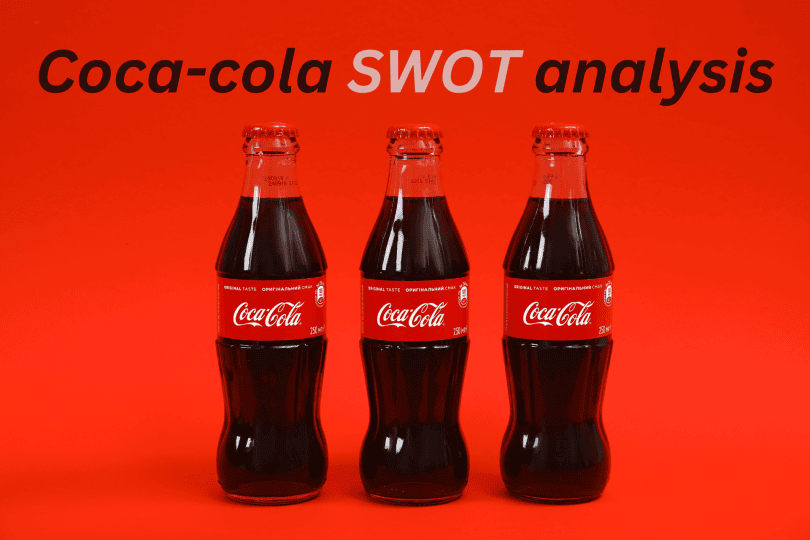

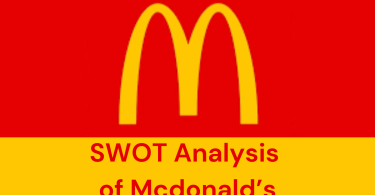

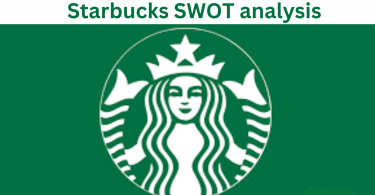


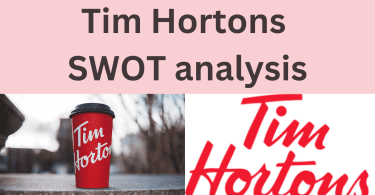

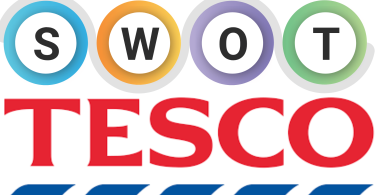
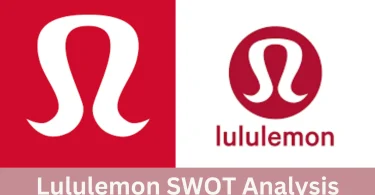
Leave a Comment